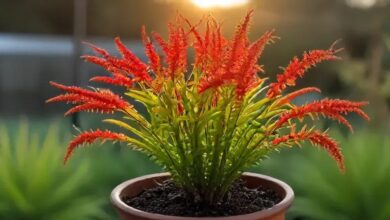A Beginner’s Guide for Growing and Caring of Ginger Plants
Blue Ginger: Cultivation, Care, and Botanical Beauty Unveiled
Dichorisandra thyrsiflora, more often known as blue ginger, is a beautiful tropical plant with verdant leaves and bright blue blossoms. The plant actually belongs to the Commelinaceae family, not the true ginger family, despite its misleading name. Blue ginger, which is native to Brazil, is an eye-catching plant that can transform any outdoor or interior area into a tropical paradise. It is important to pay close attention to the unique care requirements for effective cultivation. To make sure your blue ginger plants flourish and wow with their beauty, we’ll go over some basic maintenance instructions in this article.
Origins and Botanical Characteristics
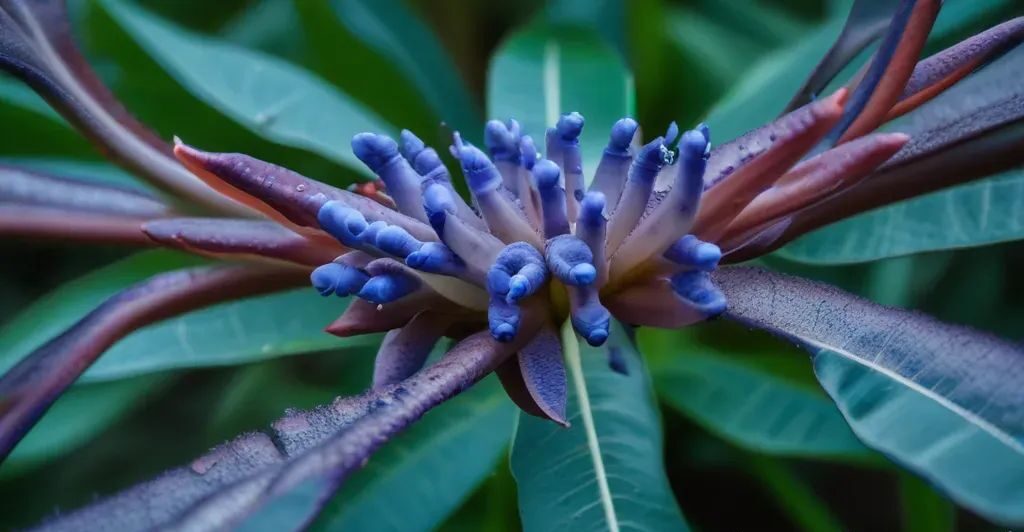
The hypnotic blue color of the blossoms is the inspiration for the term “blue ginger,” which is also used to describe blue sausage plant and Brazilian ginger. The fascinating plant usually reaches a height of 3 to 6 feet and is characterized by its robust stems with long, lance-shaped leaves that are grouped in an alternating pattern. The elaborate blue petals of these flowers, which are carried on tall spikes and emerge from purple bracts, give them an unearthly quality. Tropical and subtropical gardens worldwide often include blue ginger, a plant originally from Brazil’s verdant rainforests that does well in warm, humid conditions with filtered sunshine.
Cultivation Techniques
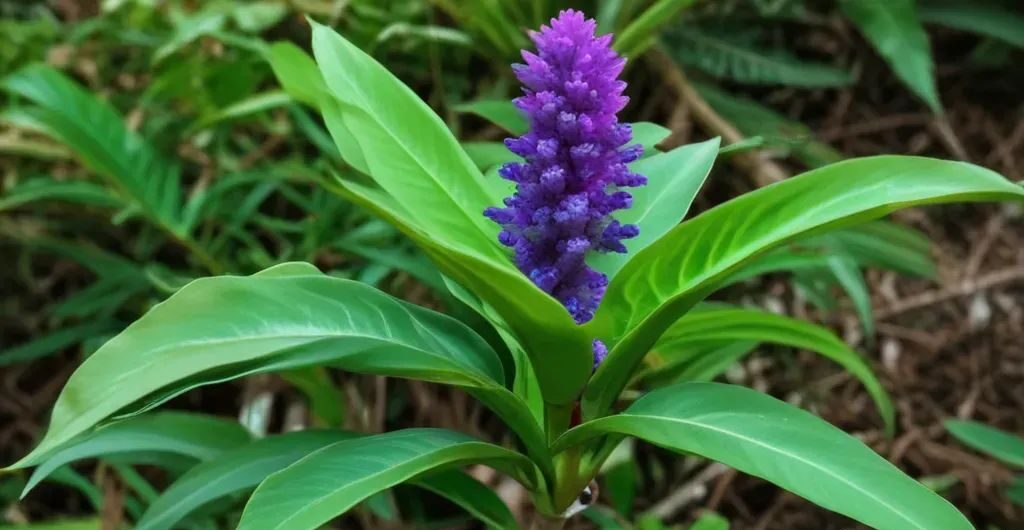
To achieve the best possible development and blooming results from blue ginger plants, careful attention to certain environmental conditions and cultivation practices is required. How about we have a look at the main aspects of caring for these unique beauties:
Light Requirements
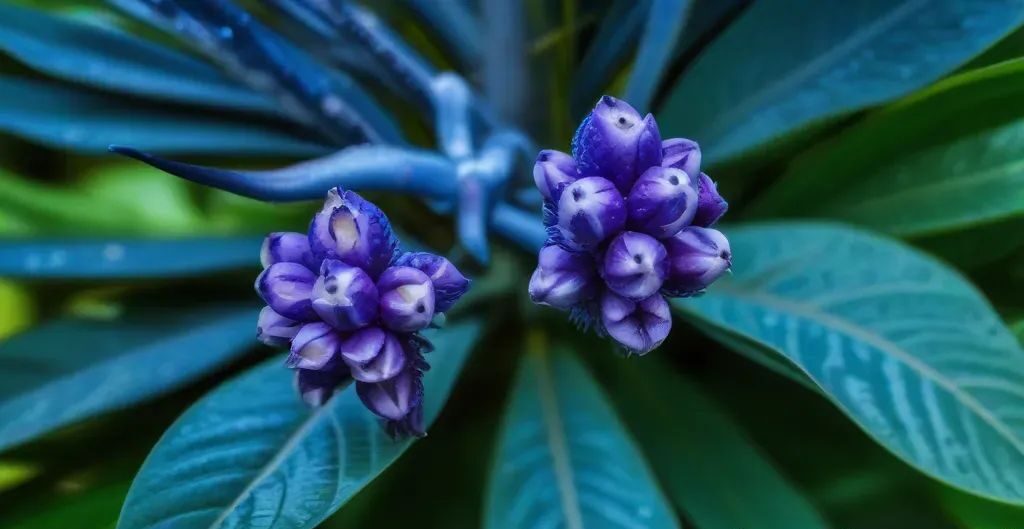
If you have a landscape with dappled sunshine or even just a bright, indirect spot indoors, blue ginger plants will thrive in partial to full shade. It is crucial to offer filtered light to avoid scorching the fragile leaves, as direct sunshine can do just that.
Soil Composition
If you have a landscape with dappled sunshine or even just a bright, indirect spot indoors, blue ginger plants will thrive in partial to full shade. It is crucial to offer filtered light to avoid scorching the fragile leaves, as direct sunshine can do just that.
Watering Regimen
The key to a successful growing season, including blooming, is constantly moist soil. When the top inch of soil feels dry to the touch, water the plants. Be careful not to water them too much, though, since this can lead to root rot. During the winter dormant phase, water less frequently but still moisten the soil gently.
Fertilization Schedule
To ensure strong development and blossoming, feed blue ginger plants a balanced, water-soluble fertilizer every four to six weeks while they are in bloom. For the sake of the roots, it’s best to dilute the fertilizer to half strength.
Pruning Practices
Pruning on a regular basis helps keep the plant in form and promotes bushier growth. Use sharp, clean scissors or pruning shears to remove wasted flower spikes, dead or yellowing leaves, and any other debris from the plant. The plant can be pruned as needed all year round to maintain its health and aesthetic value.
Pest and Disease Management
Even while blue ginger plants do not get too many illnesses or pests, they can still get aphids, spider mites, and mealybugs every once in a while. It is critical to check the leaves on a regular basis for signs of infection and to treat them immediately with insecticidal soap or neem oil. Leaf spot and powdery mildew are fungal infections that can be prevented with good air circulation.
Care Requirements
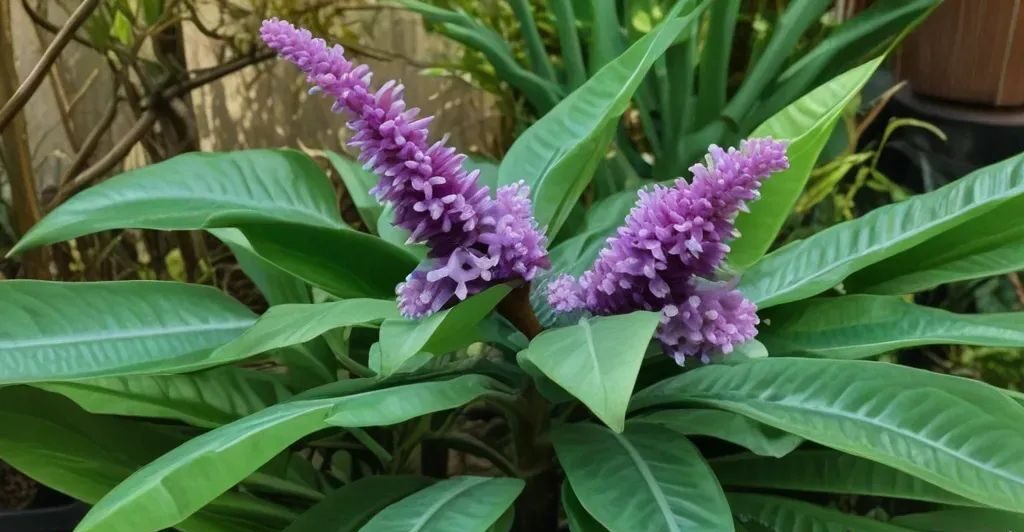
The life and health of blue ginger plants depend on your careful attention and maintenance. If you want your plants to flourish, here are a few more things you may do:
Temperature
Hot and muggy circumstances are ideal for blue ginger plants since they mimic their natural environment. For best development and blooming, keep temperatures between 18°C and 80°F (65°F to 27°C). Since they are delicate to cold, shield the plants from draughts and other forms of unexpected temperature change.
Humidity Levels
When cultivated indoors, blue ginger plants require a high level of humidity. Keeping a humidifier close by or sprinkling the plants on a regular basis will raise the humidity level. Because they dry out the air, plants can’t handle being next to heater or air conditioner vents, so keep them away from those.
Potting and Repotting
To avoid waterlogging while growing blue ginger plants in containers, make sure to select pots with sufficient drainage holes. If the soil becomes too dry or too old for the plants’ roots, it’s time to repot them every two to three years. Make sure the new pot is just a little bigger than the old one, and use potting soil that is ideal for tropical plants.
Overwintering
Overwintering blue ginger plants inside is a viable option for areas that experience harsh winters. Remove the rhizomes from the ground and set them aside in a cool, dry spot before the first frost. If you want to keep them indoors all year, replant them in the spring once frost risk has gone.
Propagation Methods for Ginger Plants
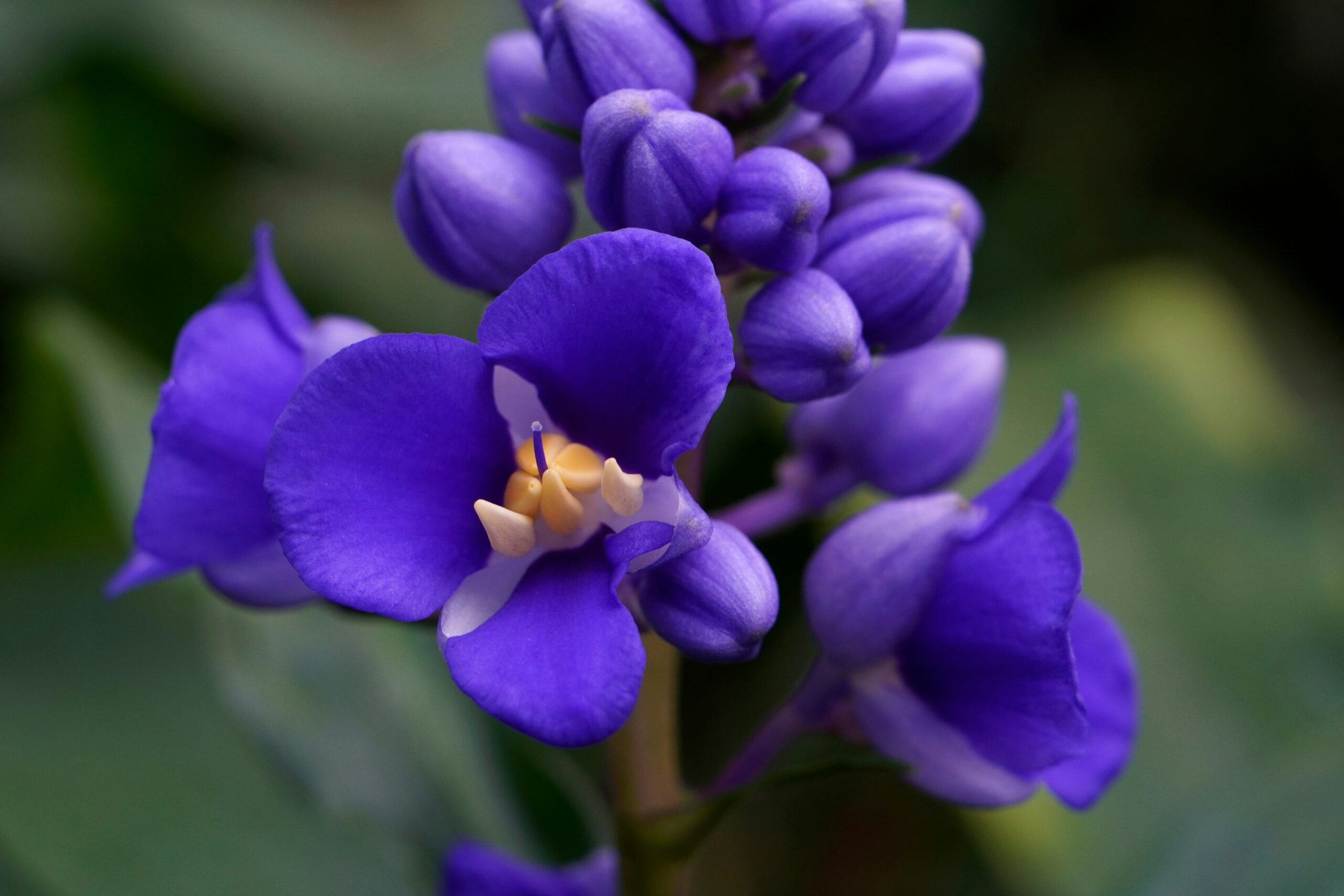
Plants of blue ginger can be multiplied by dividing them or by taking cuttings from their stems. Plants should be divided in the spring when they are fully grown, with multiple robust rhizomes and leaves in each section. Spring and summer are ideal times to take stem cuttings, soak them in rooting hormone, and then plant them in potting mix. Wait for roots to sprout.
Enchanting Botanical Beauty
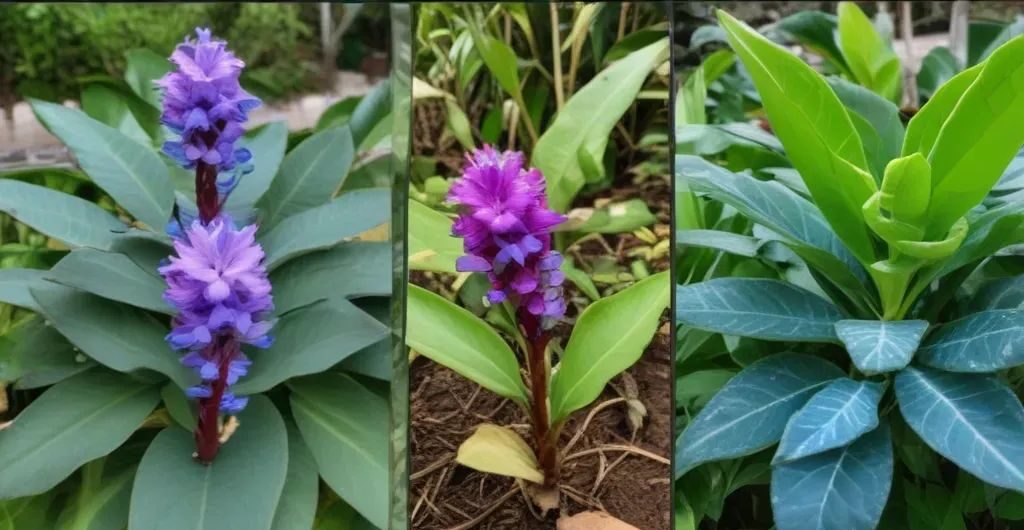
Gardeners and plant aficionados are enchanted with blue ginger plants for reasons beyond their practical care and cultivation needs. There is a unique place in the world of ornamental plants for these exotic beauties, whether it is for their beautiful blossoms, verdant foliage, or the air of tropical elegance they bring to gardens. Blue ginger plants, native to the Brazilian jungles and now grown in gardens and homes all over the world, never cease to astound and amaze everyone who beholds its flora beauty.
FAQs about Ginger Plants
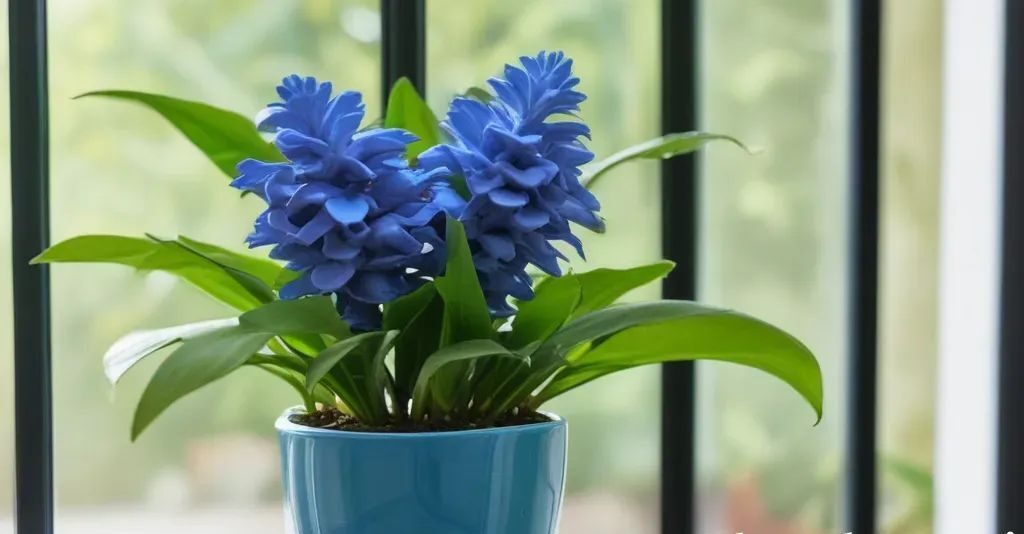
How do you grow blue ginger?
To propagate the plants, cut the stems into segments that are three nodes long. Then, immerse the bottom part of the stem in Clonex, a gel containing plant hormones that not only seals the incision but also promotes the growth of roots. After a period of 6 weeks, each cutting will undergo significant root system development, and by 8 weeks, they will be fully prepared for transplantation into pots or directly into the garden.
Can you eat blue ginger plant?
Blue ginger has been utilized in culinary and medicinal practices for ages. Over time, blue ginger proliferated globally. It is frequently consumed, particularly in Asian cuisine, or ingested as a beverage in the form of tea. A significant number of individuals continue to utilize it as a conventional therapy.
Does blue ginger like sun or shade?
It is a clump-forming perennial with a maximum height of 8 feet and a width of 3 feet. Blue ginger, unlike other plants, can flourish in the shade. It forms a substantial clump that is highly suitable for bulk planting. This plant thrives in soil that is moist but well-drained.
Is blue ginger rare?
Blue ginger is a variety of ginger that is available there, although it is not particularly common as far as I can tell. It resembles regular ginger with the exception that it possesses the blue layer that you delineate.

